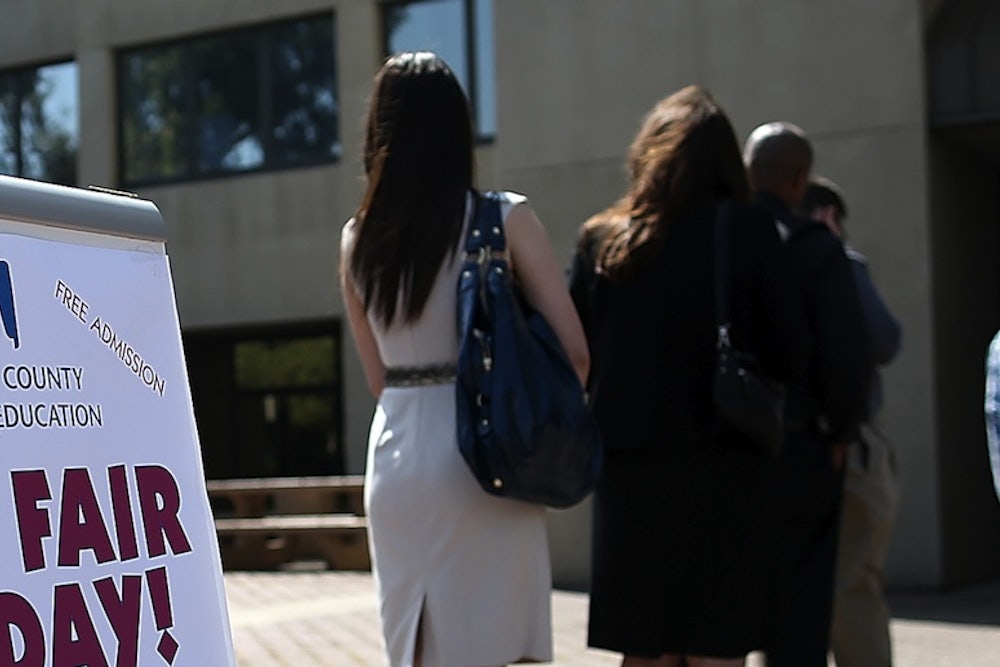Good news! The Bureau of Labor Statistics released the February jobs report on Friday morning and the numbers were the first really good economic news we’ve had in a while. BLS estimates that the economy created 175,000 jobs in February, above the consensus forecast of 149,000. The unemployment rate rose to 6.7 percent from 6.6 percent while the labor force participation rate remained unchanged at 63 percent.
Many analysts were projecting disappointing numbers and chalking it up to an abnormally cold winter season. Recent economic data has also been ugly. December and January retail sales were disappointing, consumer confidence came in below expectations and last Friday, the Bureau of Economic Analysis revised down fourth quarter GDP from a 3.2 percent annualized pace to 2.4 percent. On Wednesday, the ISM non-manufacturing survey indicated that the service sector had its first month of contraction since 2010.
But not today’s report. December and January’s job numbers were revised up 9,000 and 16,000, respectively. Meanwhile, the professional and business services sector—one that should not be influenced by the weather—added 79,000 jobs alone, a huge gain. Average hourly earnings also grew by 2.2 percent in the past year. More than 600,000 people were unemployed due to the weather, the most since 2010. If the weather really is holding back the economy right now, that makes this report even stronger in comparison.
While the unemployment rose by 0.1 percent, that’s not bad news. As the labor force tightens, it will draw back in dispirited workers who quit looking for jobs, but who will now resume their search as the economy picks up speed. A broader measure of unemployment—technically known as the U-6 measure—tracks the unemployment rate for all unemployed workers plus those marginally attached to the workforce (those who are not working or looking for a job, but indicate they want one). That unemployment measure fell from 12.7 percent to 12.6 percent.
This will also ensure that the Federal Reserve continues to reduce its asset purchases in its next meeting this month. Up until December, the Federal Reserve had been purchasing $85 billion a month of mortgage-backed securities and Treasury bonds to lower long-term rates and spur economic growth. Starting in December, the Fed has tapered those asset purchases by $10 billion a month. Fed officials have shown no inclination to pause the taper in the wake of the poor economic data and this report will only strengthen that view.
Not everything was good news though. The ranks of the long-term unemployed grew by 203,000 to more than 3.8 million, after having fallen in the past two months. That’s despite the fact that emergency unemployment insurance (UI) expired at the end of December. While Democrats have supported an extension UI and Republicans have opposed it, both sides expected the ranks of the long-term unemployed to fall this year. For Democrats, that was because UI requires the beneficiaries to actively search for a job. Without that requirement, liberals expected the long-term unemployed to drop out of the labor force altogether. Republicans believed that the expiration of unemployment benefits would lead the long-term unemployed to accept job offers that they had previously been rejecting. (Academic evidence does not back this up.) The fact that the number of long-term unemployed is increasing should worry both sides. The longer these workers stay unemployed, the more difficult it is for them to reenter the labor force and the more likely it is that they become permanently unemployed. That’s a scary outcome and one that is growing more likely with each passing month.
But all in all, this was a fairly strong report, particularly if the weather is holding back the economy. Many economic analysts predicted that 2014 would finally be the year the economy kicks into second gear. That optimism stemmed from the Murray-Ryan budget deal, which reduced the fiscal drag on the economy. Up until now, that did not seem to be the case. Now, it might just be happening.
This post has been updated.
